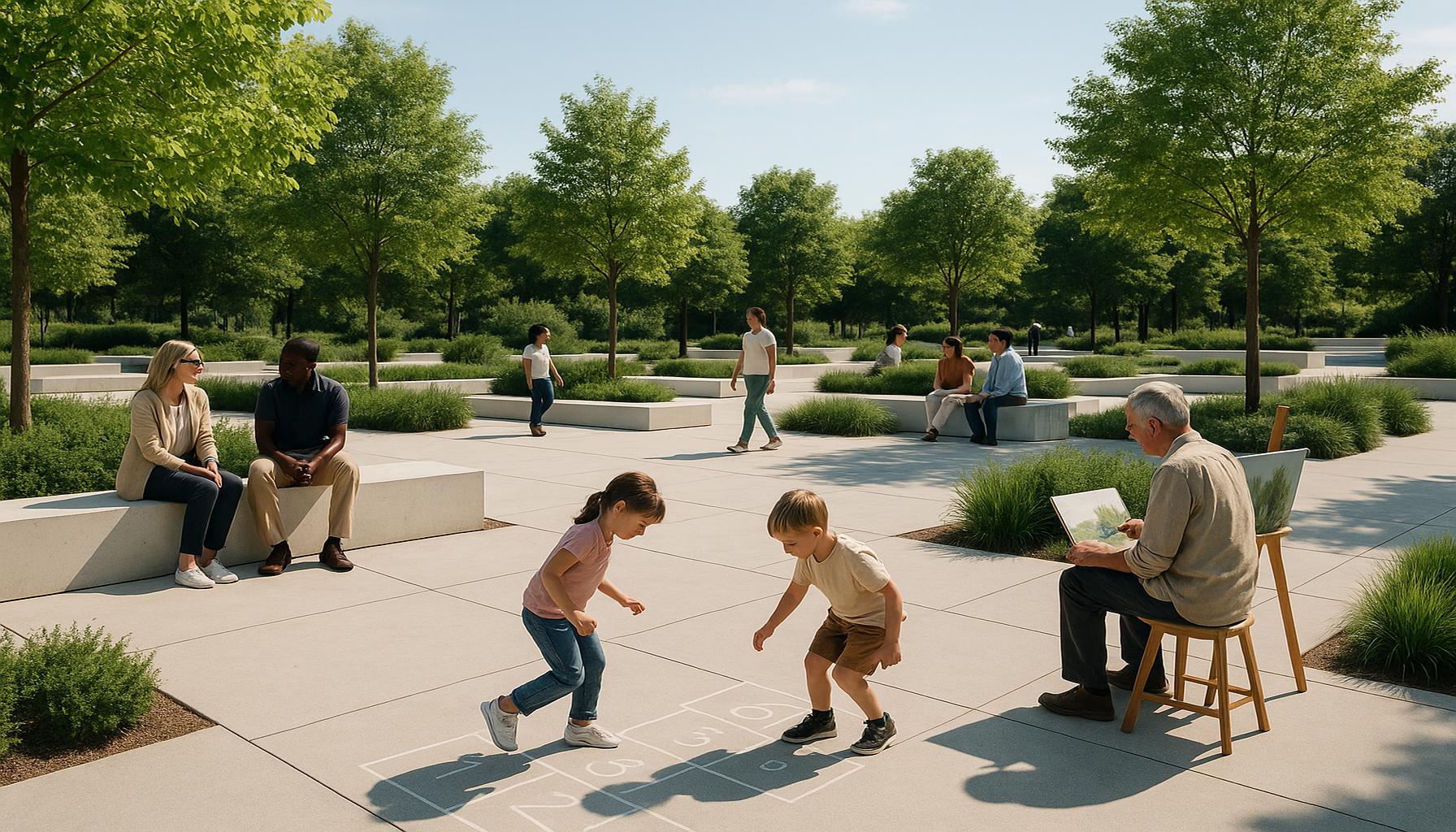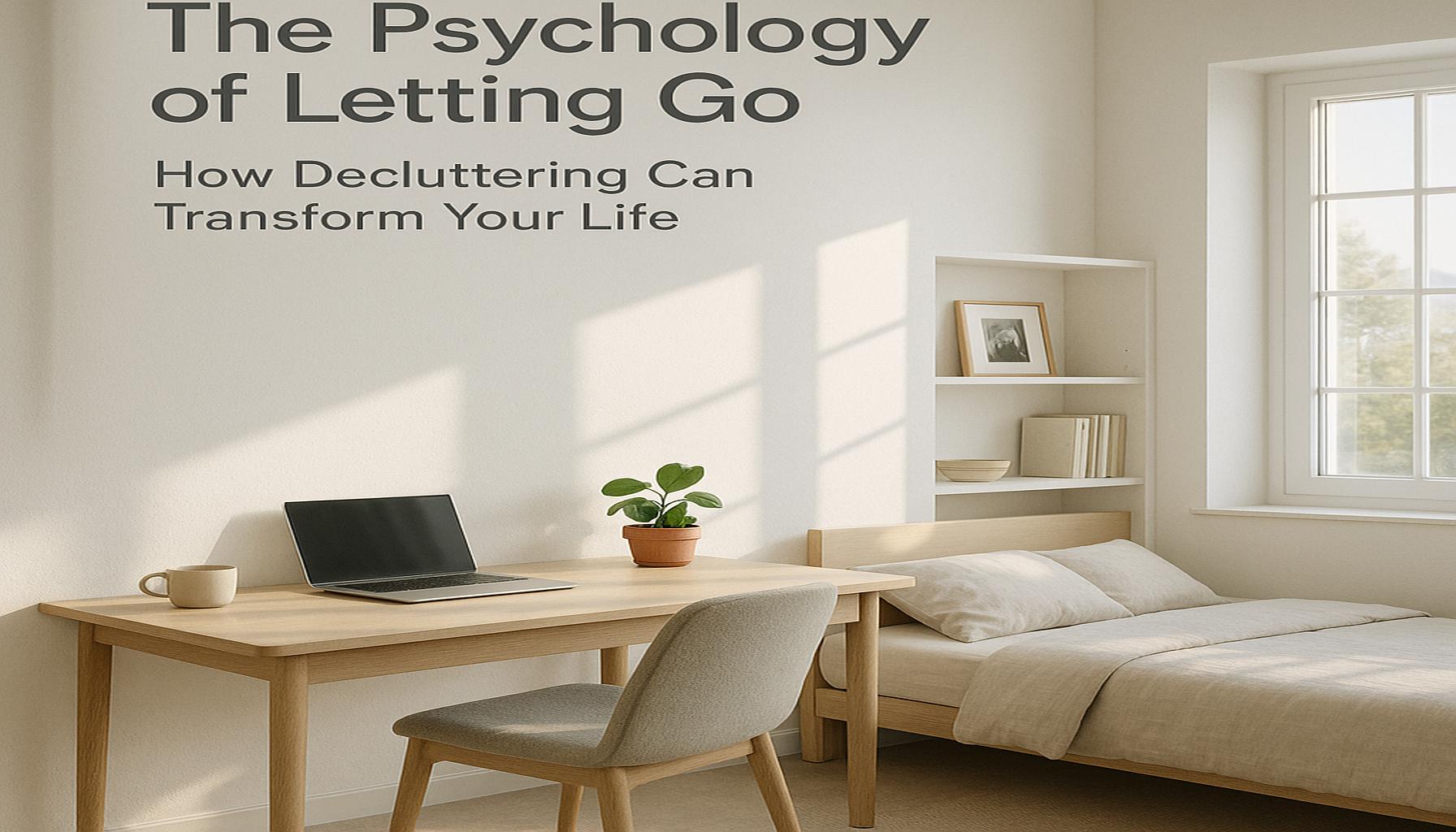Decluttering Public Spaces: The Impact of Minimalism on Communities and Collective Environments

A New Vision for Public Spaces
As we navigate the complexities of modern living, the enduring concept of minimalism is gaining traction not just in private homes but in our shared public environments. This movement invites us to reconsider how our neighborhoods are organized, focusing on simplicity, functionality, and beauty in our collective spaces. The question posed is intriguing: can a cleaner, simpler, and more intentional design enhance the liveability of our communities?
Understanding Minimalism in Public Design
Minimalism is more than just a design aesthetic; it is a philosophy that can profoundly affect the way we interact with our surroundings. In public areas, embracing minimalist principles can lead to transformative changes. For instance, parks can be redesigned to include only essential amenities, allowing for wider open spaces that invite picnics, sports, and community gatherings. By stripping away the excess, these venues become more inviting.
Enhanced Aesthetics and Environment
Enhanced aesthetics are among the most immediate benefits of applying minimalist ideas to public spaces. Cities like Chicago have embraced landscaping with native plants and fewer ornamental fixtures, which not only reduces maintenance costs but creates an inviting backdrop for community engagement. Such minimalistic approaches reflect a focused vision that resonates with residents and visitors alike, making areas like Millennium Park an icon of clean and engaging design.
Improved Functionality and Accessibility
Another significant advantage is the improved functionality of communal spaces. In busy urban areas, excess clutter can hinder movement and reduce the practicality of places where people congregate. By prioritizing usability—like ensuring wide sidewalks and removing unnecessary obstacles—communities can facilitate smoother interactions. For example, the pedestrian-oriented redesign of Times Square in New York City transformed a chaotic thoroughfare into a lively plaza, allowing for public events and performances, which significantly boosted local businesses and community spirit.
Fostering Interaction through Open Spaces
Finally, encouraged interaction is a key outcome of minimalist public design. Open, uncluttered spaces are essential for hosting community events, markets, and recreational activities. Cities such as Portland have invested in open-air markets and community gardens, fostering neighborly connections while enhancing local economies. These spaces not only allow for social gatherings but also build a sense of ownership and pride among residents, crucial for collective identity.
Conclusion: A Movement Towards Collective Identity
The current wave of minimalist design in public spaces reflects a deeper societal yearning for community and connection amid increasing urban complexity. As cities across the United States embrace this philosophy, it becomes clear that cultivating simplicity and openness can significantly influence how residents engage with their neighborhoods. By thinking critically about the spaces we share, we can contribute to a movement that enhances both our surroundings and our relationships, ultimately enriching the fabric of community life.
DIVE DEEPER: Click here to discover more strategies
Redefining Community Spaces Through Minimalism
The evolution of public spaces through the lens of minimalism heralds a transformative shift in how communities perceive and interact with their surroundings. Minimalism strips away the clutter, facilitating a harmonious balance between nature and modern life. In doing so, this philosophy emphasizes the importance of functionality and engagement, paving the way for vibrant community interactions.
The Role of Intentional Design
One of the core tenets of minimalism is intentional design. In public spaces, this means creating environments that serve a clear purpose, while reflecting the needs and values of the community. Effective minimalist design can be seen in various urban initiatives across the United States, such as the High Line in New York City. Once an abandoned elevated railway, the High Line has been transformed into a linear park that combines green spaces with art installations and walking paths, exemplifying how thoughtful design can reclaim urban areas.
Community Engagement and Participation
The push for decluttering public spaces not only enhances their aesthetic appeal but also encourages community engagement. When public areas are designed to be open and accessible, they invite residents to take part in activities that foster social interaction. Cities are recognizing that public spaces like plazas, parks, and waterfronts can become catalysts for community actions, events, and dialogues. Examples of such spaces include:
- The Embarcadero in San Francisco, where open spaces foster community events and boutique markets.
- Pioneer Courthouse Square in Portland, lovingly referred to as “Portland’s Living Room,” which serves as a hub for cultural gatherings.
- Millennium Park in Chicago, a setting for concerts and festivals that promotes artistic exchanges and communal celebrations.
Health and Well-Being Through Minimalist Approaches
Another pivotal aspect of minimalism in public spaces is its impact on health and well-being. Studies have consistently shown that well-designed, uncluttered environments contribute positively to mental health and community well-being. Green spaces, in particular, are crucial for promoting a sense of tranquility and connection to nature. By prioritizing gardens, walkable paths, and open areas free from excessive signage and structures, cities can create refuges from the chaos of urban life.
Encouraging Sustainable Practices
Minimalist design also aligns with sustainability efforts. Cities that embrace decluttering often see a decrease in resource consumption and waste production. For example, utilizing native landscaping reduces the need for water and maintenance, allowing ecosystems to thrive. By promoting sustainable practices in the design and upkeep of public spaces, communities can play a vital role in combating climate change and preserving local biodiversity.
In summary, the marriage of minimalism and public space design offers a promising blueprint for creating environments that are not just visually pleasing but also conducive to community well-being and interaction. As cities become more aware of the impact of decluttering principles, the potential for enhancing collective living continues to grow, leading us toward healthier, happier communities.
Understanding Minimalism in Public Spaces
Minimalism is not merely a design choice; it is a philosophy that influences the way we view our surroundings and how we interact with them. The implementation of minimalist principles in public spaces has shown profound effects on communities and collective environments. By stripping away the excess and focusing on the essentials, public areas become more functional and enjoyable for everyone.One key aspect of this transformation is the improvement in mental well-being. Studies indicate that cluttered environments can heighten stress levels, while minimalist spaces promote calmness and clarity. For instance, parks and plazas designed with minimal furniture and clear pathways encourage relaxation and social interaction, fostering stronger community ties. Spaces that are free from visual distractions enable individuals to connect more deeply—both with their surroundings and with each other.Moreover, implementing minimalism in urban planning addresses an essential aspect of sustainability. With fewer resources consumed in the design and maintenance of public spaces, cities can allocate their budgets more effectively to address broader community needs—such as improving public transit or enhancing public health programs. This results in not just cleaner environments, but also healthier, more engaged communities.A compelling example can be seen in cities that have adopted minimalist designs for their public transport stations. These stations often prioritize functionality and accessibility, thus eliminating unnecessary complexity. The outcome? Increased usage rates and greater satisfaction among commuters. The beauty of minimalism in public spaces lies in its potential to reshape community interactions and elevate the shared experience of urban life.As discussions around minimalism evolve, more cities are expected to explore this approach, recognizing its significant potential to enhance livability and sociability. By decluttering public spaces, communities move toward a future that embraces simplicity and sustainability, encouraging a collective environment where everyone can thrive.
| Advantages | Impact on Communities |
|---|---|
| Enhanced Mental Well-being | Minimalist spaces reduce stress and foster relaxation. |
| Sustainable Resource Allocation | Fewer resources lead to better budget management for community needs. |
This approach not only shifts the aesthetic and operational dynamics of public spaces but also the very fabric of community interaction, inviting citizens to engage more authentically and sustainably with their environment.
DISCOVER MORE: Click here to enhance your mental clarity
Minimalism as a Catalyst for Economic Opportunities
Beyond the aesthetic and ethical advantages, minimalism in public spaces can also act as a strong economic driver for local communities. When cities adopt a decluttered approach, they often witness a surge in tourism and local businesses. Engaging, open spaces attract visitors, who in turn support nearby restaurants, shops, and services. A striking instance can be observed in Millennium Park in Chicago, which not only transformed a previously under-utilized area but also became a significant venue for events that boost the local economy through increased foot traffic and spending.
Increasing Property Values
Another economic benefit of minimalist public spaces is the potential increase in property values. Clean, well-designed environments signal a higher quality of life, making neighborhoods more desirable for potential buyers. A 2020 report from the Nature Conservancy highlighted that neighborhoods with increased access to green spaces and thoughtfully designed public areas saw property values rise by as much as 20%. This trend emphasizes how decluttered spaces can enhance not only the community’s visual appeal but also its economic landscape.
Social Equity and Inclusivity in Design
Minimalism also plays a significant role in fostering social equity by ensuring that public spaces are accessible and inclusive for everyone, regardless of socioeconomic status. By creating clutter-free environments, city planners can emphasize pathways, seating, and engagement areas that are not only welcoming but also designed for diverse populations. Initiatives like Los Angeles’s Grand Park, which hosts year-round community events, highlight how inclusive design can bridge gaps between different populations, promoting dialogue and understanding among residents.
Fostering Creativity and Innovation
Decluttered public spaces also serve as breeding grounds for creativity and innovation. By reducing distractions, minimalist environments can inspire individuals and groups to think outside the box, leading to collaborative projects, community art installations, and innovative programming. A prime example is the transformation of underused lots into “pop-up” community spaces where local artists can display their work or host workshops. Such initiatives not only beautify areas but also provide a platform for local talent to shine, encouraging cultural enrichment within communities.
Challenges and Considerations
While the advantages of minimalism in public spaces are compelling, it is essential to address the challenges that may accompany this transformation. The implementation of decluttering initiatives often requires significant investment and careful planning. Cities must consider ongoing maintenance and the need for community input to ensure that spaces truly reflect the desires of their residents. Engaging local stakeholders early in the design process fosters a sense of ownership, reducing the chances of revitalized areas falling into disrepair.
Furthermore, as cities embrace minimalism, it is crucial to strike a balance between open, engaging spaces and necessary infrastructure. Utilities, transportation elements, and emergency access must remain integrated into the design, avoiding a sterile environment that sacrifices functionality for simplicity.
In conclusion, the infusion of minimalism into public spaces unlocks a multitude of benefits that extend beyond mere aesthetic enhancement. By considering economic opportunities, social equity, fostering creativity, and navigating challenges, communities can fully harness the potential of decluttered environments and create lasting positive change for their residents.
DISCOVER MORE: Click here to enhance your focus
Conclusion: Embracing Minimalism for Community Enrichment
In summary, the adoption of minimalism in public spaces presents an innovative approach to community development that resonates on multiple levels. By prioritizing decluttered environments, cities not only enhance their aesthetic appeal but also create vibrant hubs that foster economic growth through increased tourism and local business activity. The documented rise in property values associated with well-designed, accessible public spaces underscores the tangible financial benefits tied to minimalist principles.
Furthermore, the drive for social equity and inclusivity in design can pave the way for a more cohesive society. Spaces that are welcoming to all demographics encourage dialogue and collaboration, bridging gaps and fostering a sense of community engagement. Initiatives showcasing local talent—such as art installations in pop-up community venues—reveal how decluttered spaces serve as catalysts for creativity and innovation, making neighborhoods not just places to live, but thriving areas of cultural expression.
However, the path towards implementing minimalism is not without its challenges. To realize the full potential of decluttered environments, cities must invest in sustainable designs that consider long-term functionality and community involvement. Striking a balance between openness and necessary infrastructure is crucial to avoiding sterile environments that fail to serve residents’ practical needs.
Ultimately, by embracing minimalism, communities can transform their public spaces into dynamic, engaging environments that reflect the values and aspirations of their residents. This shift towards decluttering, with its array of benefits, could mark a turning point in how cities approach collective environments, creating future-ready communities that thrive on simplicity, inclusivity, and innovation.


